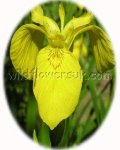 | ||
Early Dog Violet -viola riviniana– is a beautiful and familiar wildflower that evokes memories of spring. It`s our earliest violet to flower often appearing as early as late February several weeks ahead of Common Dog Violet. It’s preferred habitat is woodland glades and hedge banks but plants will also tolerate more sunny sites and can be grown in a variety of positions in gardens, so long as the soil is relatively moist. Plants are very important, for emerging Butterflies. Violets are low growing species with delightful heart-shaped purple blue flowers that appear from Mach to May. Early Dog Violet looks best growing with other spring wildflowers such as Primroses, Greater Stitchwort, and Cowslips. In gardens early dog violet can often be established in the gaps between paving slabs and will self seed readily. How to grow Early Dog Violet Seeds Early Dog Violet seeds should be sown in autumn, either outside, where they are to flower, or in seed trays and covered lightly with compost. Early Dog Violet seeds require a period of cold weathering before germination will occur. The seedlings, can be pricked out and grown on, for planting out later in the year. The addition of leaf mould to the soil will be of benefit, by helping to retain moisture. To buy Early Dog Violet seeds To purchase Early Dog Violet seeds please select a quantity above and click add to cart. To ensure the best chance of success, we sell all of our wildflower seeds by weight, which ensures each wildflower seed packet contains a good quantity of seeds. The recommended sowing rate is 1 gram per square metre and the number of Sweet Violet seeds per packet is approx. 25. All of our Wildflower seed packets contain seeds of Native British provenance. Summary type - perennial, colour - Purple, height - 0 to 25cms, flowering months - March, April, May, July, August, September, habitat -Deep Shade (Dense Woodland), Semi-Shade (Orchards, Hedgerow, Banks, Open Woodland) attracts butterflies, caterpillar food plant | ||
Printed 29/04/2024 06:16:29
st120_1 type annual colour pink height 25 to 50cms flowers july august september habitat bare open ground eg arable field margins disturbed waste ground




 added to basket
added to basket